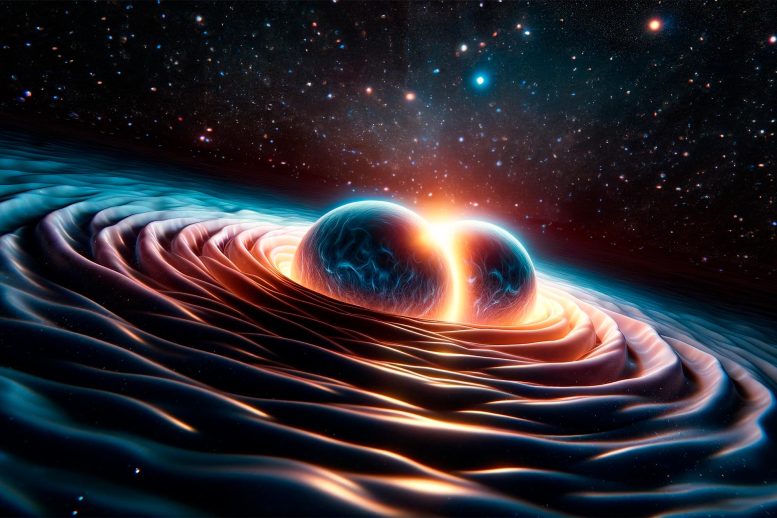Neutron star mergers have long captivated scientists, and recent breakthroughs have illuminated the aftermath of these colossal cosmic collisions. When two neutron stars collide, they create a remnant teeming with secrets about the universe. The latest research from Pennsylvania State University is particularly groundbreaking. By utilizing supercomputer simulations with general-relativistic neutrino-radiation hydrodynamics, these scientists have delved into the enigmatic remnants of neutron star mergers. This advanced modeling reveals the intricate cooling process of the remnant, which emits neutrinos—a type of elementary particle. Unlike typical stars, the remnant’s surface temperature surpasses that of its core, creating a unique scenario where convective plumes are unlikely to form.The central object of the remnant, which contains most of the mass, is surrounded by a fast-rotating ring of hot matter. This configuration plays a significant role in the remnant’s evolution and stability.

As the remnant cools by emitting neutrinos, it generates a distinctive signature detectable by observatories on Earth. This crucial information enables astronomers to pinpoint neutron star mergers’ locations and meticulously study their properties. Moreover, these findings pave the way for future observations and theoretical models, significantly enhancing our ability to explore the universe.
The significance of this study extends beyond the realm of astrophysics. By unraveling the mysteries of neutron star merger remnants, scientists can gain insights into the fundamental laws of physics. This research contributes to our understanding of the strong force, one of the four fundamental forces in nature, and its role in the behavior of nuclear matter. Additionally, it provides a framework for studying other extreme astrophysical phenomena, such as supernovae and black holes.
The study published in The Astrophysical Journal utilized resources from the Department of Energy’s National Energy Research Scientific Computing Center, the Leibniz Supercomputing Center in Germany, and the Institute for Computational and Data Science at Pennsylvania State University.



















